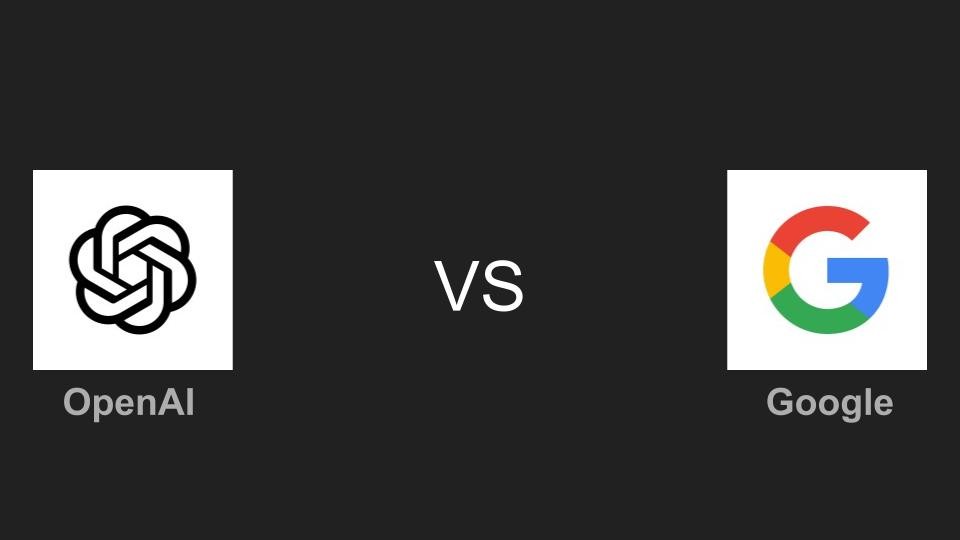ChatGPT and Google Bard are AI-powered chatbots engineered to respond to user prompts effectively. When utilized correctly, these tools can enhance various business processes including content creation, development, and beyond. Explore the distinct features, advantages, and disadvantages of each to determine which AI chatbot is the optimal choice for your business needs.
What exactly is ChatGPT?
ChatGPT is an AI chatbot created by OpenAI, designed to produce responses that mimic human conversation based on textual input. Known as a large language model, it has been trained on a vast dataset of internet text.
What is Google Bard?
Google Bard is an AI chatbot developed by Google. Similar to ChatGPT, it can respond to queries and create text based on user prompts. Isaimini
Google Bard vs. ChatGPT: Key Differences
A significant distinction between the two AI chatbots is that while the free version of ChatGPT may not have the most current information due to its lack of internet access, Google Bard can browse the web to gather and utilize up-to-date data. Currently, Bard does not offer a paid tier option.
Another difference lies in their technological foundations. ChatGPT operates on OpenAI’s GPT-3.5 or GPT-4 models for its free and paid versions, respectively. In contrast, Bard is powered by Google’s Gemini Pro or PaLM 2 models, which vary depending on the user’s language and location. Bard can understand images and supports seamless integration with Google services such as Flights, Hotels, Maps, Drive, Gmail, Docs, and YouTube, enhancing its functionality. Additionally, Bard allows the use of extensions that leverage these Google products. Meanwhile, subscribing to ChatGPT Plus grants users access to a range of third-party plugins that broaden the chatbot’s capabilities.
ChatGPT and Google Bard Pricing
ChatGPT
ChatGPT offers a free version that utilizes GPT-3.5. For those requiring more advanced capabilities, ChatGPT Plus is available for $20 per month. This premium version provides subscribers with quicker response times, early access to new features, and the use of GPT-4. The GPT-4 API became generally available in July 2023. There is also a ChatGPT Team plan, which includes features for managing team roles, as well as sharing conversations and GPT models among team members.
Google Bard
Google Bard is available at no cost and allows an unlimited number of queries. This aligns with Google’s longstanding practice of offering free services, with the company primarily earning revenue through advertising.
Feature Comparison: ChatGPT vs. Google Bard
Text Generation
Both ChatGPT and Google Bard excel in text generation, capable of tasks ranging from summarizing information to creating lists, poems, and essays. Whether you need an explanation of a topic, a comparison of items, or assistance drafting an email, both AI systems are equipped to provide helpful responses. 1377x
Pros of ChatGPT
1. Fast Response Times: ChatGPT offers notably quick response times, surpassing earlier AI chatbot models, which enhances business efficiency. Additionally, ChatGPT Plus provides even faster performance than Google Bard.
2. Human-Like Text Generation: Thanks to training on a vast dataset, ChatGPT can generate text that sounds more natural and human-like compared to previous generations of AI chatbots.
3. User-Friendly Interface: Designed to be accessible, ChatGPT supports a broad array of tasks including translation, summarizing text, and generating song lyrics. Its straightforward interface and clear responses make it particularly user-friendly for people without technical backgrounds.
Cons of ChatGPT
1. Accuracy and Reliability Issues: Despite its capabilities, ChatGPT’s responses may sometimes include errors or outdated information because they are generated based on its training data. While ChatGPT Plus offers improved access to internet information, this limitation can still affect its reliability.
2. Potential Bias: Due to biases inherent in its training datasets, ChatGPT might produce biased responses. This issue can particularly impact its performance in languages other than English, where it is more likely to generate inaccuracies.
3. Lack of Real-World Awareness: ChatGPT operates solely on pre-existing online data and cannot understand or integrate new real-world experiences into its responses. This confines its output to its training, without the nuance of lived human experience.
Google Bard Pros and Cons
Please specify if you’d like a general list of pros and cons for Google Bard or if there are specific aspects you’re interested in comparing with ChatGPT.
Pros of Google Bard
1. High-Quality Text Generation: Google Bard excels in producing text that closely resembles human writing, making it highly effective for a variety of applications such as answering questions, summarizing content, and translating text.
2. Extensive Training Dataset: Trained on a vast corpus of text and code, Google Bard can deliver more detailed and knowledgeable responses than smaller AI models.
3. Versatile Text Output: Whether it’s drafting job descriptions, crafting hiring letters, or generating reports, Google Bard’s capabilities make it an adaptable tool for business and creative uses.
Cons of Google Bard
1. High Computational Demand: Operating large transformer models like Bard requires substantial computational resources, which can be a limiting factor in terms of scalability and cost.
2. Experimental Nature: As an ongoing experiment, Google Bard might occasionally deliver incorrect or misleading information, reflecting the inherent uncertainties in cutting-edge AI development.
Cautions When Using AI Chatbots
Both ChatGPT and Google Bard are under continuous development and may exhibit biases or inaccuracies in their responses. Users are advised to critically evaluate the information these chatbots provide to confirm its validity. Google Bard includes a “Google button” feature that allows users to verify responses by cross-referencing them with trusted search sources, enhancing the reliability of the information received.
Deciding Between ChatGPT and Google Bard for Your Organization
Both ChatGPT and Google Bard offer free versions, with additional features available through paid plans like ChatGPT Plus and ChatGPT Team. Trained on expansive natural language models, these AI chatbots deliver generally comparable responses.
However, Google Bard presents several unique features that may influence your choice. It allows users to view “draft” responses, providing a range of possible answers. Moreover, Google Bard benefits from real-time internet access, ensuring its information is always current. In December 2023, Google enhanced Bard’s capabilities by upgrading its underlying engine from PaLM 2 to Gemini Pro, which has significantly boosted its performance.
These distinctions might help you determine which tool is better suited to meet the specific needs of your organization.
Conclusion:
In summary, choosing between ChatGPT and Google Bard depends on your organization’s specific needs. Google Bard offers real-time updates and versatile response drafts, making it ideal for tasks requiring current information and flexibility. ChatGPT, with its structured pricing plans, appeals to teams seeking predictable costs and enhanced features. Evaluate each tool’s unique capabilities to determine the best fit for your business objectives.






